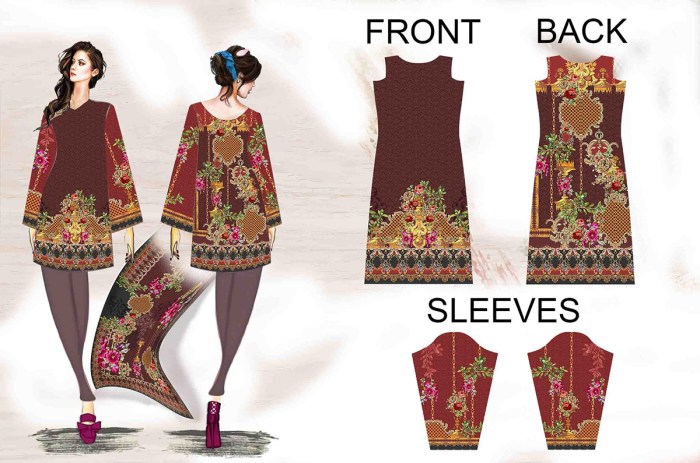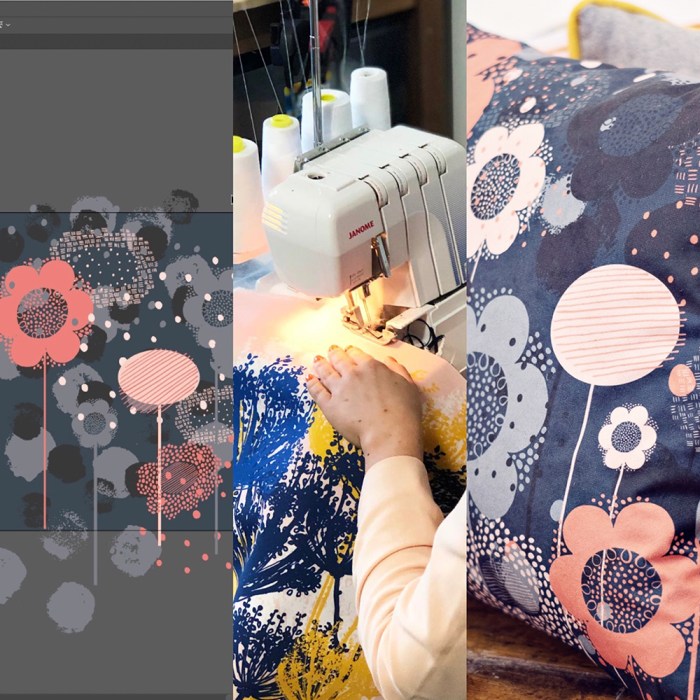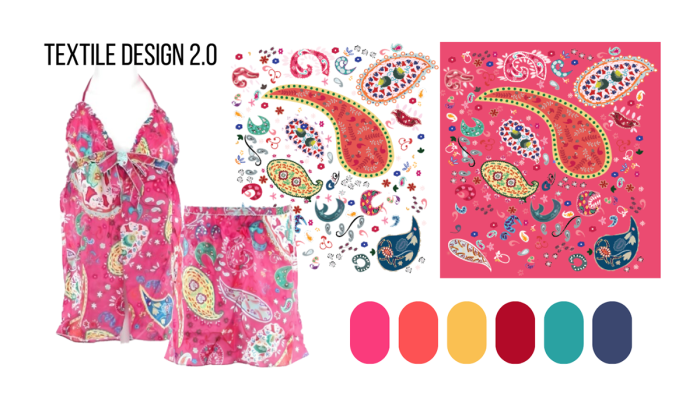Exploring the World of Textile Design
Step into the vibrant realm of textile design where colors, patterns, and textures intertwine to create mesmerizing fabrics that shape the fashion industry. From traditional techniques to modern innovations, this article delves into the artistry and creativity behind textile design.
Introduction to Textile Design
Textile design is the art of creating patterns and textures on fabrics, playing a crucial role in the fashion industry. These designs are essential in making fashion collections unique and visually appealing.
Significance of Textile Design in Fashion
Textile designers are responsible for developing innovative patterns, prints, and textures that set a fashion collection apart from others. They work closely with fashion designers to ensure that the fabrics used complement the overall aesthetic and vision of the collection.
- Textile design adds depth and dimension to garments, making them visually interesting and appealing to consumers.
- Unique fabric patterns can help establish a brand's identity and differentiate it from competitors in the market.
- Textile designers play a key role in creating cohesive and harmonious collections by ensuring that the fabrics used complement the overall theme and design elements.
- By experimenting with different techniques and materials, textile designers can push the boundaries of creativity and innovation in fashion.
Elements of Textile Design
Color, pattern, and texture are key elements that make up a textile design. These elements play a crucial role in determining the overall look and feel of the fabric, whether it be for clothing, home decor, or other purposes.Different materials used in textile design can greatly impact the outcome of the final product.
Natural fibers like cotton or silk may create a soft and breathable fabric, while synthetic fibers like polyester or nylon can result in a more durable and easy-to-care-for textile. The choice of material can also influence how colors appear on the fabric and how well it holds certain patterns or textures.When comparing traditional textile design techniques with modern digital methods, there are significant differences in terms of speed, precision, and flexibility.
Traditional techniques such as hand weaving or block printing require skilled artisans and can be time-consuming, but they often result in unique and intricate designs. On the other hand, digital methods like computer-aided design (CAD) allow for quick iterations, precise detailing, and easy scalability of designs.
While digital methods offer efficiency and consistency, traditional techniques provide a sense of craftsmanship and artistry that can be valued for their handmade quality.
Textile Design Process

Textile design involves a meticulous process that transforms creative concepts into tangible products. From the initial idea to the final product, textile designers follow a series of steps to bring their vision to life.
Research and Inspiration
Research and inspiration play a crucial role in the textile design process. Designers often gather inspiration from various sources such as nature, art, culture, and current trends. This research helps them develop a unique concept and theme for their designs, setting the foundation for the entire creative process.
Creating Patterns and Motifs
Techniques used for creating patterns and motifs in textile design vary depending on the desired outcome. Some common methods include:
- Hand Drawing: Many designers start by sketching their ideas by hand, allowing them to explore different concepts and layouts.
- Digital Design: With advancements in technology, many designers use software programs to create intricate patterns and motifs with precision.
- Screen Printing: This technique involves transferring a design onto fabric using a mesh screen and ink, allowing for the replication of intricate patterns.
- Embroidery: Adding texture and dimension to textiles, embroidery is a popular method for creating detailed motifs and designs.
- Block Printing: Using carved blocks to stamp designs onto fabric, block printing is a traditional method that results in unique patterns.
Textile Design Trends

Textile design trends are constantly evolving, influenced by a variety of factors such as cultural shifts, technological advancements, and sustainability initiatives. Let's explore some of the current trends shaping the world of textile design.
Sustainability in Textile Design
One of the major trends in textile design is the focus on sustainability. Designers are increasingly incorporating eco-friendly practices and materials into their creations, such as organic cotton, recycled fibers, and natural dyes. This shift towards sustainability reflects a growing awareness of the environmental impact of the fashion industry and a desire to create more ethical and responsible products.
Digital Printing and Textile Design
Another key trend in textile design is the use of digital printing technology. This allows designers to create intricate patterns and designs with greater precision and flexibility, resulting in unique and visually stunning textiles. Digital printing also offers a more sustainable alternative to traditional printing methods, as it reduces water consumption and waste.
Innovative Materials in Textile Design
Advancements in technology have led to the development of innovative materials that are revolutionizing the world of textile design. From smart textiles that can regulate body temperature to biodegradable fabrics made from algae, designers are pushing the boundaries of traditional materials to create textiles that are both functional and sustainable.
Cultural Influences on Textile Design Trends
Cultural influences play a significant role in shaping textile design trends. Designers often draw inspiration from diverse cultural traditions, art forms, and historical references to create textiles that reflect a rich tapestry of global influences. For example, the vibrant colors and intricate patterns of traditional African textiles have inspired designers around the world to incorporate similar elements into their collections.
Technology’s Impact on Textile Design
Technology is transforming the landscape of textile design, enabling designers to experiment with new techniques, materials, and processes. Advancements in 3D printing, augmented reality, and virtual design tools are expanding the possibilities for creative expression in textile design, allowing designers to push the boundaries of innovation and sustainability.
Final Conclusion

As we conclude our exploration of textile design, it becomes clear that this intricate art form is not just about fabrics but a reflection of culture, technology, and creativity. Dive into the world of endless possibilities with textile design and witness how it continues to evolve and inspire the fashion world.
FAQ Guide
What role do textile designers play in the fashion industry?
Textile designers are responsible for creating unique fabric patterns and textures that elevate fashion collections and set trends in the industry.
How do different materials impact the outcome of a textile design?
The choice of materials such as cotton, silk, or polyester can significantly affect the look and feel of a textile design, influencing its overall quality and appearance.
What are some current trends in textile design?
Current trends in textile design include sustainability practices, digital printing techniques, and the use of innovative materials like recycled fabrics.




